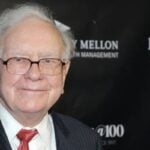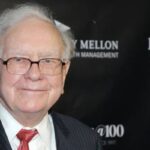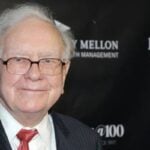Warren Buffett is one of the greatest investors of all time. So, if you follow his moves by buying what he buys and selling what he sells, that’s a recipe for investing success, right?
Copycat investing sounds good in theory. Buffett even admitted in a 2009 Berkshire Hathaway Annual Meeting, “I did the same thing when I was young.” However, the Wizard of Omaha offered a word of warning as well. "You can piggyback on my moves, but you can’t buy the whole businesses I do."
The problem is that most investors don’t have the means to buy entire businesses in the way that Buffett can, and that means they don’t have the same control over the outcomes.
That’s just one reason why buying like Buffett looks a lot better on the surface than it is. But it certainly doesn’t mean you need to have Berkshire Hathaway’s amount of capital to become a successful investor. Below are three Buffett-backed tips for growing your wealth as an individual investor.
Start when you can
It’s all about starting small. The sooner you start investing, the better, no matter how much you’re setting aside. That’s because one of Buffett’s core principles, compounding, ensures you earn returns on both your initial investment and the growth it generates. For instance, investing $100 per month at a 5% annual compound rate would grow to $15,593 over 10 years.
If you’re struggling to find the extra cash to invest, platforms like Moka can simplify investing by building a long-term portfolio for you using your spare change.
Moka automatically rounds up purchases to the nearest dollar and invests the difference into diversified portfolios. This way, even everyday spending can contribute to your financial goals.
It’s perfect for those new to investing who want a set-it-and-forget-it solution with minimal effort.
Invest for the long-run
Instead of trying to beat the market and constantly changing your investments, another tried-and-true Buffett approach is to pick solid investments and then leave them alone.
In 1998, Buffett shared his belief that investors should “only buy something that you’d be perfectly happy to hold if the market shut down for ten years.” Data from Finimize also proves that in general, the longer your investment horizon is, the less likely you are to suffer a loss.
If you have a long-term goal in mind for your investments, working with a financial advisor can help you make a concrete plan to get there.
The upside to working with a financial planner is that you’ll have an expert who isn’t emotionally attached to your money offering advice on how to manage your assets. That could be invaluable, especially if life ends up throwing you a curveball, such as an earlier-than-expected retirement, a sickness or other unplanned event.
However, if you’re confident in your ability to invest and can keep any personal sentiment from influencing your decision-making process, CIBC Investor’s Edge offers a comprehensive platform for do-it-yourself investors to build and manage their own portfolios. It’s a great choice self-directed investors to trade stocks, ETFs, options, mutual funds and more online or through a mobile app, keep on top of markets with a vast library of research, and set up alerts to monitor stocks and get real-time quotes through a bank-owned online brokerage with strong security measures.
Research, but don’t copy
Another issue with trying to follow Buffett’s trades is that the stock market moves quickly. In the 1960s, when the Oracle of Omaha was in his 20s (and perhaps still copy trading), the average stock-holding period was between seven and eight years. Now, it’s less than a year long, on average. And given the Securities Exchange Commission (SEC) only requires American institutional investors, such as Buffett, to disclose their holdings quarterly, you’d often be several months behind his actual trades.
This delay can lead to serious risks. That’s why it’s important you stick to industries or businesses you understand rather than following blindly.
Although social media trends or buzzy crypto drops may make lead some investors to chase fleeting, if downright deceitful money moves, it’s important to not dive headfirst into something without doing your research and always expressing a bit of healthy skepticism.
This article provides information only and should not be construed as advice. It is provided without warranty of any kind.









